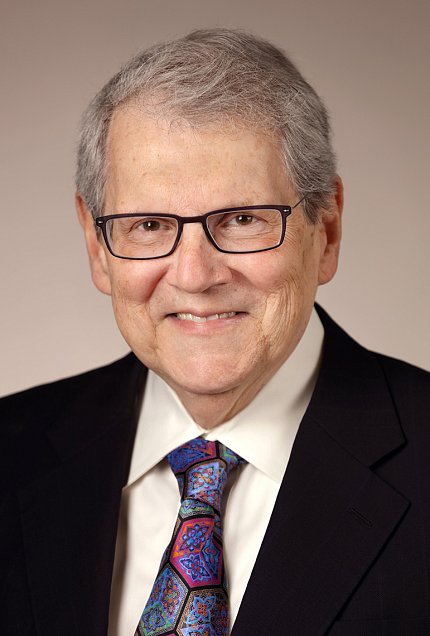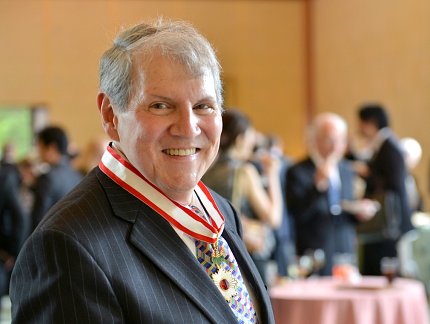NIAMS Director Katz Remembered

Photo: NIAMS
When he was a student at Bethesda-Chevy Chase High School, few could have predicted the heights he would reach as a scientist a few miles away on the NIH campus. Dr. Stephen Katz overcame early academic stumbles to eventually become director of the National Institute of Arthritis and Musculoskeletal and Skin Diseases. He passed away unexpectedly on Dec. 20, 2018, at age 77.
Katz served in NIAMS’s highest office from 1995 until his death. While he rose to prominence in national and international dermatology circles during his distinguished career, he spoke candidly about his origins as a high school student with little interest in books.
“In high school and junior high school, I was a terrible student,” he recalled in a video interview in 2017. “So I’m a rather ignominious graduate of this high school.”
Despite that rocky start, he discovered a love of learning as an undergraduate at the University of Maryland. His studies would take him on a global journey, with stops in places such as Uganda, London and New Orleans. Katz’s career included a stint in the U.S. Army at Walter Reed Medical Center during the Vietnam War before eventually landing at NIH in 1974.
Katz’s NIH career began at the National Cancer Institute—first as a senior investigator and later as a lab chief—with a focus on skin and the immune system. His work contributed to major advances in our understanding of blistering skin diseases.
In 1995, then-NIH director Dr. Harold Varmus recruited Katz to become the second director of NIAMS. At the institute, Katz made sure his passion for dermatology did not cloud his vision. He was known for stressing the need to give all fields across the institute’s broad research portfolio the support they needed.
In addition to his role at NIAMS, Katz’s influence was also felt across NIH. He led more than a dozen director searches and trans-NIH committees, such as the scientific data council and the Clinical Center governing board.
“When we needed someone to provide wise advice on a complex topic (most recently, Big Data), we called Steve,” wrote NIH director Dr. Francis Collins in a statement. “When we wanted someone to mentor a new member of NIH leadership, we called Steve. And he always said yes. His legacy is simply profound.”

Photo: NIAMS
Research societies also recognized Katz’s legacy, honoring him with numerous awards throughout his career. One award in particular took a place of honor in his office—the Japanese government’s Order of the Rising Sun, Gold Rays with Neck Ribbon.
As a researcher, Katz was dedicated to helping develop the next generation of scientists. He took a global perspective as he mentored students from Japan, South Korea, Europe, as well as the United States. Many of those scientists are now established investigators helping to move the dermatology field forward.
Katz’s focus on the future abounded at NIAMS, as he was committed to fostering training and career development opportunities in the institute’s intramural and extramural research programs. In early December, he was an active participant at an annual forum for third-year K08 and K23 awardees, where he listened to and encouraged up-and-coming clinician-scientists as they pursue research independence.
“Steve’s influence stretched around the world and his efforts in the lab and as a steward of public research funding have helped improve countless lives,” said Dr. Robert Carter, deputy director under Katz since 2008 and currently the institute’s acting director. “His legacy will live on as the scientific seeds he planted continue to bloom for years to come.”
In addition to Katz’s scientific pursuits, he also nurtured his creative side. He was a musical fixture at many NIH and NIAMS celebrations. He sang at a holiday event shortly before his passing.
Katz is survived by Linda, his wife of 51 years, his three children, a grandson, and numerous cousins, nieces, nephews, grandnieces and grandnephews.
A memorial service is scheduled for Friday, May 3 at 1:30 p.m. in Masur Auditorium, Bldg. 10. All are welcome.
